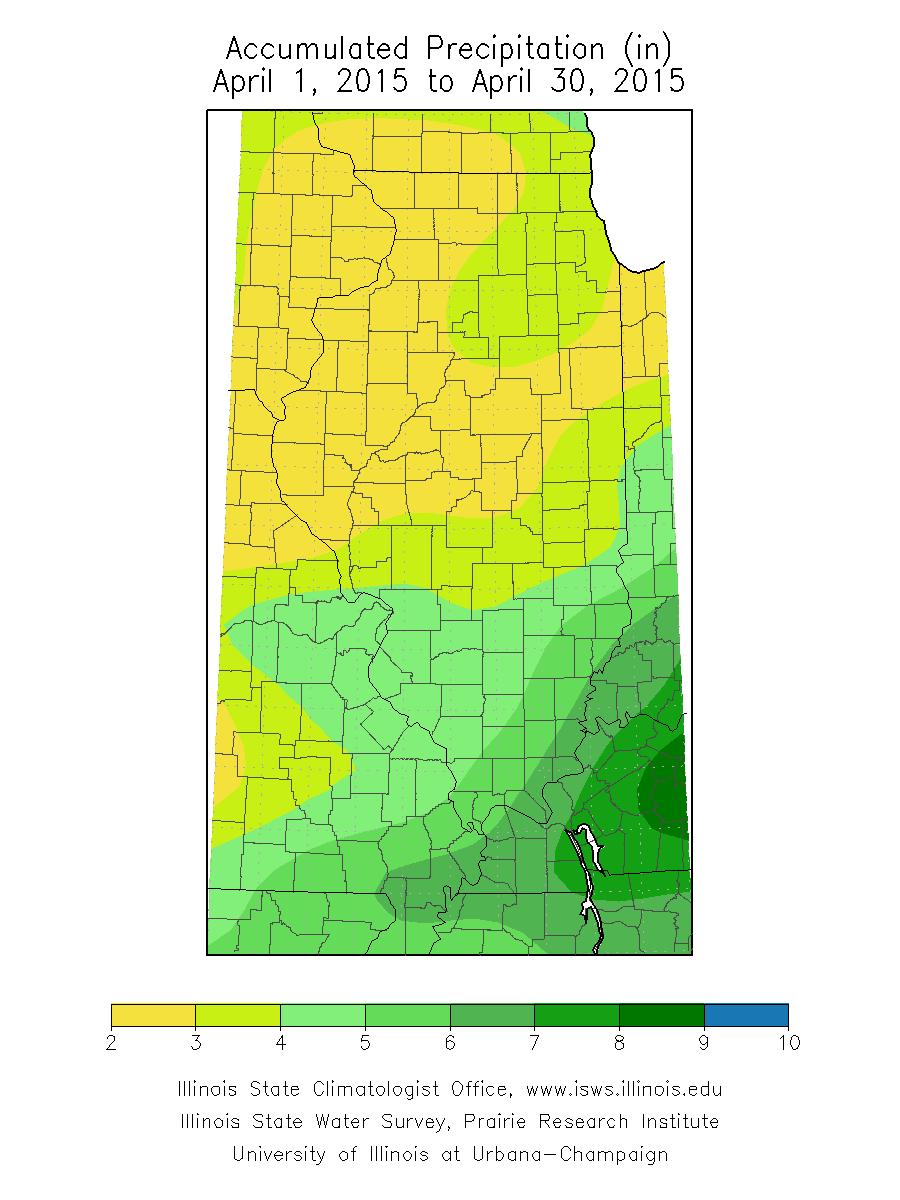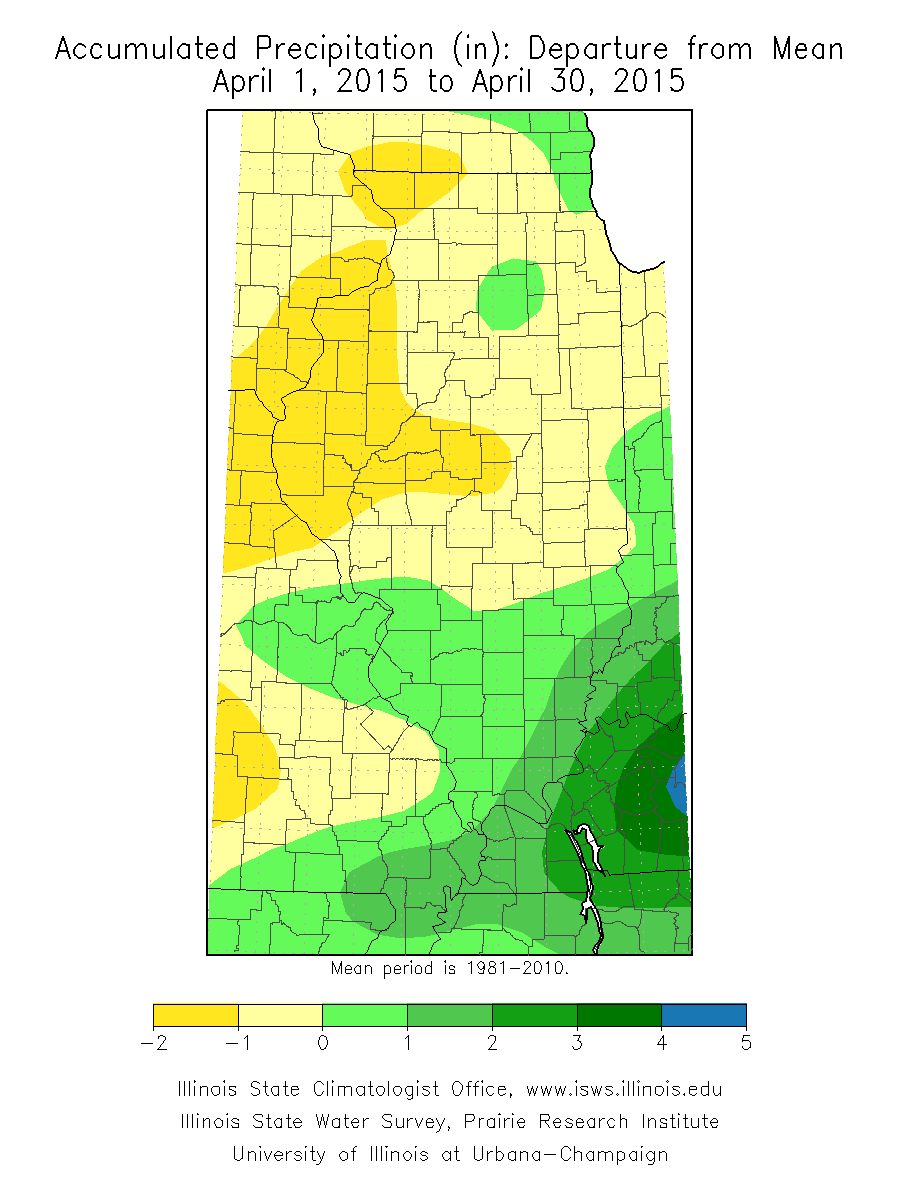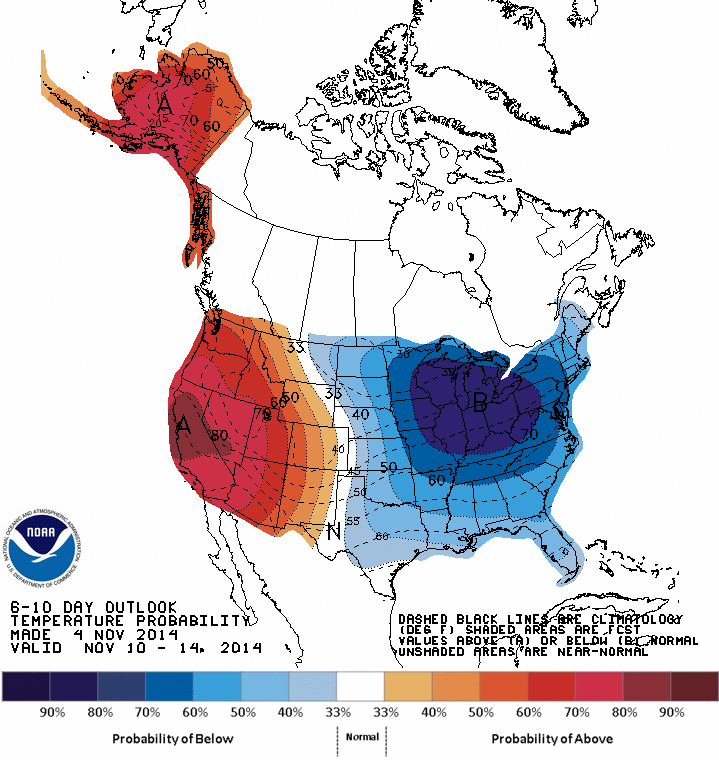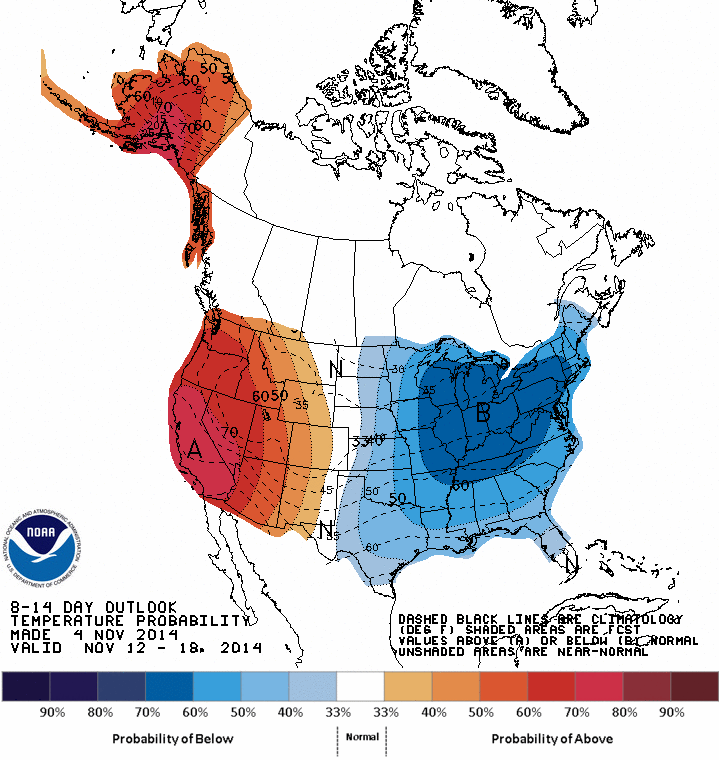While there were a few cold stretches in April, the statewide average temperature for the month was 54.1 degrees, 1.7 degrees above average.
Precipitation in Illinois for April was more complicated. April precipitation was in the range of two to four inches in northern and central Illinois, and 4 to 7 inches in southern Illinois. As a result, the northern two-thirds of the state was slightly below average while the southern third was up to 2 inches above average. Fort Massac State Park reported the highest monthly precipitation total of 7.80 inches.


Continue reading “Above-Average Temperatures for April in Illinois”








